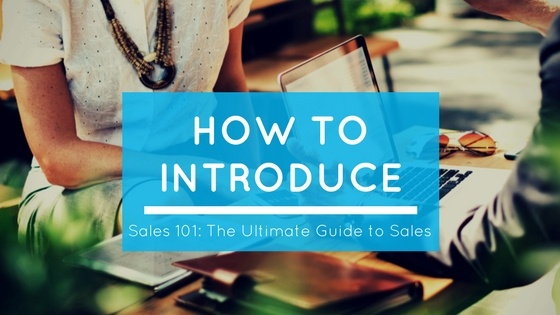5 Steps: How to Handle Sales Objections with Ease
Objections are concerns and issues raised by a potential customer during the sales process that inhibit purchase. Some sales reps see objections as a...
Introducing yourself to prospects is the first step in a sales conversation. It is a one-line sentence that tells the prospect what you do. It is popularly called ‘sales trailer’ because it gives a crisp idea about the offering to the potential customer. The sales trailer sets the agenda of conversation and encourages the conversation forward.
.jpg?width=560&height=315&name=sales%20introduction%20how%20to%20and%20tips%20(1).jpg)
A typical sign of a good sales trailer is that it communicates the value of offering and introduces the company and salesperson without taking too many sentences. Here are some essentials of a good introduction:
The introduction should be very simple avoiding the jargon and irrelevant information. For instance, if your designation has no significant impact on lead then save it for the later. Highlight why you called and let the conversation continue.
A good introduction describes the underlying benefit of moving forward with the conversation. It defines the value proposition and how the prospect can benefit from the call. If you only talk about company’s achievement and history the person will disengage.
A good sales trailer should not be a speech but an invitation to chat. It should give room to the prospect to make a judgment and respond. Remember your prospect might have some stuff to say that could completely change the course of conversation.
Here is what I would call a good sales trailer:
“Hi, I am Yogesh from Intelligense, a product helping companies increase productivity and simplify sales.”
Read More: Why Choose Virtual Reality in Marketing?

The art of sales conversation is a something you learn by experience and it varies dramatically based on the situation. What I can give you is a framework that holds true for every conversation. The framework is called AIDA - attention, interest, desire, action. It is the work of Elias St. Elmo Lewis - an American advertising advocate.
In sales, we cannot sell with the introduction. It is gradual information flow that convinces the prospect to buy the product. Hence, we try to move a lead through following 4 stages in a conversation:
Attention - You first need to get the attention. That is what the sales trailer is for. At this point, all you need to do is convince the person to engage in the conversation.
Interest - Once you get the attention you need to get them interested. This is done by explaining the solution, establishing credibility and highlighting the benefit to the prospect.
Desire - The prospect needs to feel the need for the product. At this point, you understand the pain point and pivot your conversation to target the most pressing problems of prospect that your product can solve.
Action - Now is the time to set things to action. It is time when prospect would choose to buy your product and go ahead with the purchase.
A prospect can walk out of the conversation at any point during the sales conversation. Rejections are a part of sales. While it is necessary to learn from mistakes never let them affect your motivation. The next lesson explains the objection handling where you learn to satisfy client’s concerns inhibiting sales. Let’s get to it.
Get the best lessons of sales in one ebook. Download Sales 101: The Ultimate Guide to Sales today and enjoy tactics that work.

Objections are concerns and issues raised by a potential customer during the sales process that inhibit purchase. Some sales reps see objections as a...

A sales meeting is where you personally interact with the prospect and take him through various stages of conversion - attention, interest, desire,...
